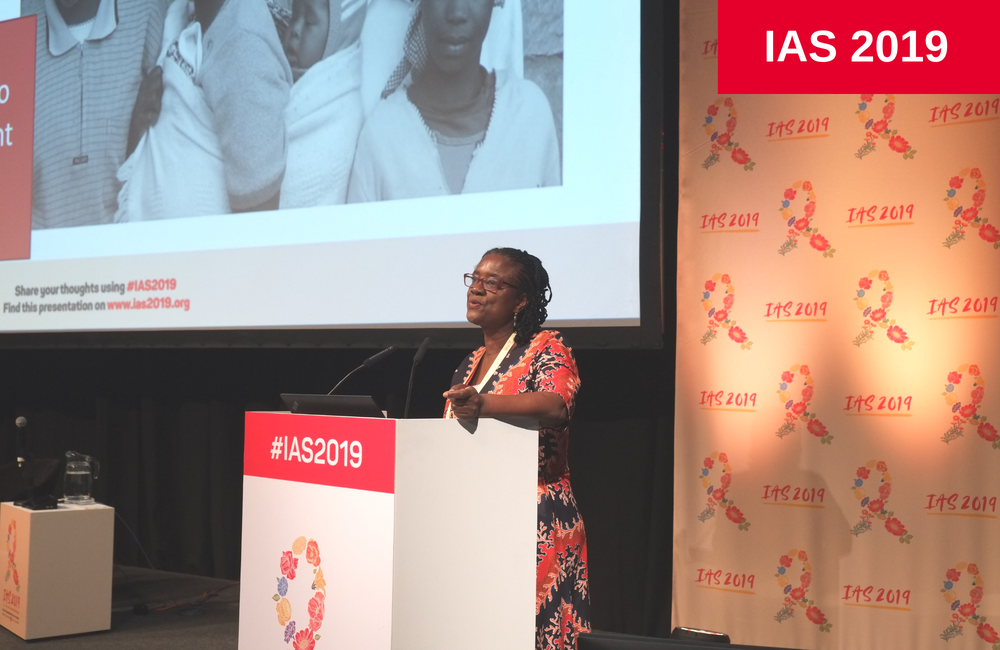
ECHO, the landmark trial demonstrating that injectable hormonal contraceptives do not raise women’s risk of acquiring HIV, released its results just a month before this week’s 10th International AIDS Society Conference on HIV Science (IAS 2019). While providing reassuring news about contraception, the study also revealed an unacceptably high incidence of HIV among trial participants, despite the prevention services that had been provided.
ECHO stands for Evidence for Contraceptive Options and HIV Outcomes. In several sessions, researchers, policy makers and advocates discussed the trial’s lessons and how to better serve young women in sub-Saharan Africa.
What ECHO tells us about HIV risk
Overall HIV incidence (new infections) in ECHO was 3.8% per year, but this varied between study sites in the four countries studied: South Africa, eSwatini, Kenya and Zambia.
The highest HIV rates were seen in South Africa, where around three-quarters of trial participants were located. Dr Thesla Palanee-Phillips of Wits Reproductive Health and HIV Institute in Johannesburg told a press conference that experts had been hoping that the ECHO data would confirm a decline in HIV incidence among South African women. Whereas annual incidence in 2012 had been estimated to be 2.3%, a national household survey in 2017 estimated it to be 0.9%.
However, ECHO found that in South Africa, incidence was 4.5% and was above 3% at each of the nine study sites in the country.
“The ECHO results are not ‘good news’,” said advocate Jacque Wambui of AfroCAB. “The women in this trial were recruited and enrolled because they wanted contraception and were sexually active. They did not have the ‘risk factors’ we hear about in so many other HIV prevention trials.”
Moreover, the participants were attending healthcare services as part of their trial participation, and were offered the ‘standard of care’ – risk reduction counselling, condoms and pre-exposure prophylaxis (PrEP – in the latter part of the trial only, after it became available in South Africa).
“Renewed efforts are required in communities and in services to intensify the delivery of HIV prevention interventions including PrEP,” said Palanee-Phillips.
The inability of existing interventions to manage risks is underlined by the sexually transmitted infection (STI) data. This analysis included women in all four countries and found that when women entered the trial, the prevalence of gonorrhoea and chlamydia was 4.7% and 18.2% respectively. Despite the prevention measures offered at each study visit, when women left the study this was little changed at 4.8% and 15.4% respectively.
The approach to STIs taken in the trial (except at the first and last study visits) was ‘syndromic management’, which is the standard of care in most African countries. This involves women who present with symptoms being offered presumptive treatment without confirmatory testing – while people with asymptomatic infections remain untreated. The data show the inadequacy of this approach.
What ECHO tells us about contraception
As outlined by Dr Nelly Mugo of the Kenya Medical Research Institute and the University of Washington, ECHO provides reassuring answers to several of the trial questions:
- There were no significant differences in the rate of HIV infections among women randomly allocated to use one of the three contraceptive methods: injectable DMPA (depot medroxyprogesterone acetate, also known as Depo Provera); the copper intrauterine device (IUD); or levonorgestrel implant.
- All three contraceptive methods were effective: when women were using their method, only about 1% of participants became pregnant over one year.
- There was a low rate of side-effects (around 7%), with few women switching methods for this reason.
- When women were offered effective, long-acting contraception there was a very high rate of acceptance and method continuation. Women randomised to the implant used it for 94% of the time, DMPA for 93% of the time and IUD for 89% of the time.
- Although there are many myths and misconceptions about the IUD and it had not been widely used at many of the trial sites before the study, it was acceptable for women in the study.
For many, the data support a greater ‘method mix’ at contraceptive services, allowing women a larger range of options, rather than relying on one or two methods for all.
What ECHO tells us about service integration
Advocates and scientists argue that a key lesson of ECHO is that women need support to prevent pregnancies and HIV infection at the same sites, from the same healthcare providers. Women who do not fall into ‘high-risk groups’ are more likely to attend reproductive health services than HIV prevention services.
“As a provider in Africa and as a scientist, I feel strongly we have failed young women who come to us seeking reproductive health services or contraceptives, by not providing HIV prevention services as a combined standard of care package,” commented Mugo.
This package might include HIV testing (including self-testing and testing for male partners), partner notification services, condoms, STI testing and treatment, screening for intimate partner violence, linkage to antiretroviral therapy services and PrEP.
Wambui said that decisions about appropriate packages of services should be based on community consultation. “The woman is one person: the woman has many needs,” she said. Women-centred services, capable of dealing with a range of issues under one roof and at one time, are needed, she argued.
However, service integration has been argued for many times before. The money for the different elements comes from different sources and funding streams, with specific funding to support the integration process rarely provided. Implementing integration will be challenging in overstretched, understaffed health services.
Palanee-Phillips T et al. High HIV incidence among young women in South Africa: data from the ECHO trial. 10th International AIDS Society Conference on HIV Science, abstract LBPEC23, 2019.
View the abstract on the conference website.
Update: Following the conference presentation, this study was published in a peer-reviewed journal:
Palanee-Phillips T et al. High HIV incidence among young women in South Africa: Data from a large prospective study. PLOS ONE, 12: e0269317, 2022.
https://doi.org/10.1371/journal.pone.0269317
Deese J et al. Risk of sexually transmitted infections among women randomized to DMPA-IM, the copper IUD, and levonorgestrel implant in the Evidence for Contraceptive Options and HIV Outcomes trial. 10th International AIDS Society Conference on HIV Science, abstract LBPEB16, 2019.
View the abstract on the conference website.
Hormonal contraception and HIV risk: Understanding the ECHO trials results, and what’s next for women, providers, policies, and programmes. 10th International AIDS Society Conference on HIV Science, session SUSA19, 2019.
View the details of the session on the conference website.
WHO response to the results of the evidence for contraceptive options and HIV outcomes (ECHO) study. 10th International AIDS Society Conference on HIV Science, session TUSA01, 2019.

